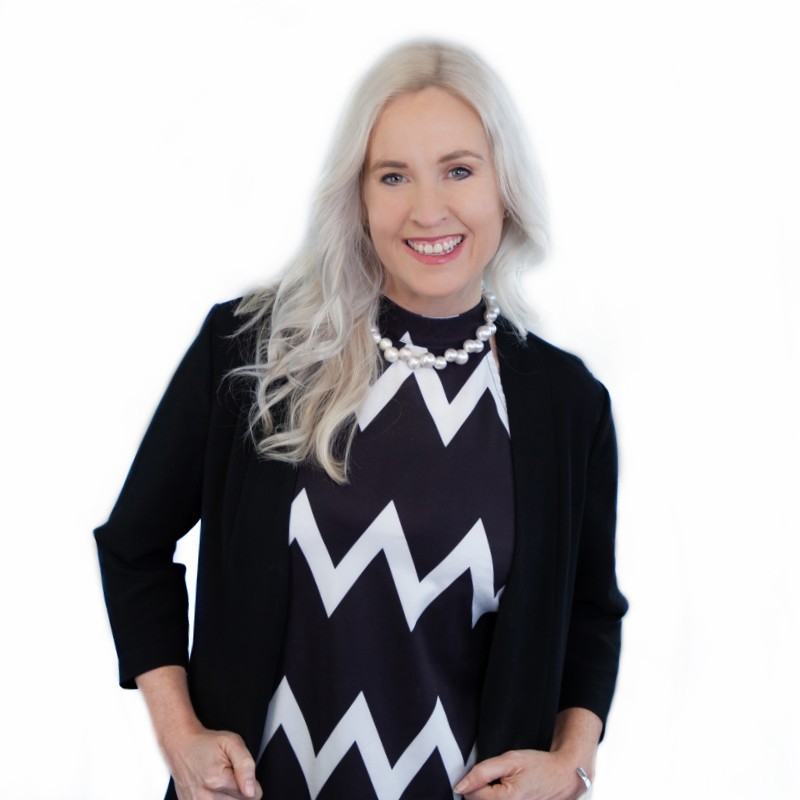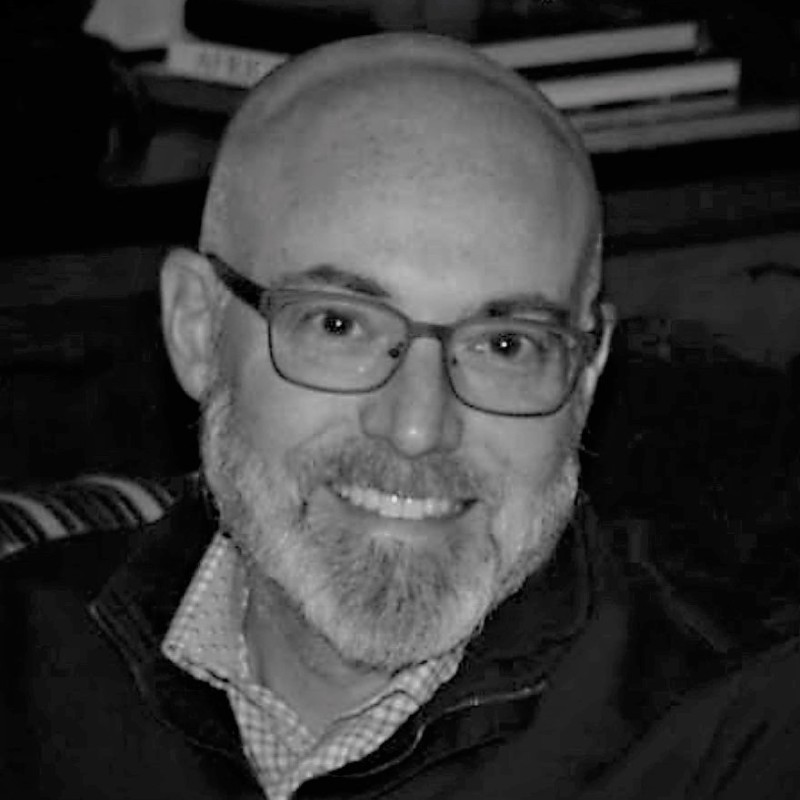What are we talking about?
Maslow’s hierarchy of needs in the workplace
Why is Maslow’s hierarchy of needs important for the future of work?
Most of corporate values are just platitudes and posters on the wall. We need something much deeper. Maslow’s hierarchy of needs does a great job of showing how a company can really live out its values in the workplace so that we create a sense of belonging.
What did Arlene Roane teach us about the hierarchy of needs in the workplace?
There are a lot of platitudes that Arlene doesn’t like.
Like “awareness”. It doesn’t do anything. We need to move forward to critical actions like acknowledging.
“Diversity” is another one. Everyone values diversity, but what we really mean is that we want people who look different than us to come to our offices and act like us. This just leads to group think and diminishes what diversity is supposed to do in the first place.
Corporate values, when really executed correctly, help to move companies to understand how they can meet people’s needs better.
In fact, Arlene recommends to talk about corporate behaviors instead of values. How are the behaviors we allow in our company determining who does and does not feel welcome? Can different people in the organization respectfully challenge anyone, or are there unspoken rules?
Arlene says businesses can learn a lot by adopting Maslow’s hierarchy of needs in the workplace.
- At the base level, are you meeting basic needs? Do you provide enough pay that people feel secure? Do they feel threatened when they come into the office? Have you provided for their health?
- Next comes love and belonging. How do people in your company share concern for each other? How do they know that they belong? What behaviors do they demonstrate to show this?
- Then is esteem. How are you making sure that people are competent in their roles and are continuing to learn and succeed in them?
- Only once all these things are in place can employees move to self-actualization and become the best they can.
To move up the hierarchy, you need to build trust along the way, but that’s not just an action item. It takes time and different people build it in different ways.
As you build the right culture, Arlene gives this final test: Do you see people in the periphery, or just those who are like you? It’s a skill to be able to see and empathize with people in your periphery, but inclusive leaders need to develop it. If you are not comfortable, you aren’t doing it right. Value those folks as much as you do others. It’s in the margins that you might find brilliance and answers.
More from Arlene Roane
Today, our guest is Arlene Roane. She’s an advisor and practice lead for inclusion and diversity for A Human Advantage. And this is Work Minus Platitudes. Hi, Arlene. How are you doing today?
I’m doing well today. Thank you, Neil.
It’s a pleasure to have you on. Why don’t you start off just introducing yourself and the work you do.
I work in three distinct areas. I name these areas based on what’s recognizable to people. First is global diversity. And that pretty much corresponds to how people identify themselves culturally individually, around the world. I work with a lot of multinational or global organizations in both the for profit and nonprofit sector. The next area is inclusion. And that really focuses on a set of behaviors because inclusion is the behavior or a set of behaviors that makes diversity work. And then the last area that I work in is cultural competency. And that’s an even more refined set of skills that help people, leaders in particular, focus on how do I really recognize and respond to significant human differences? That’s what I do.
You spend a lot of time talking and recognizing that people are different, and we can’t assume that everyone’s just like us, right?
Absolutely. And I’m glad you said recognizing because one of the platitudes I really dislike is awareness. Diversity awareness, there was a lot of, I think, emphasis some years back on increasing awareness and you still see that in course titles and I just avoid it because awareness is like being on a moving sidewalk. You’re in the airport, you just know your gate is B47. You get close to B47. And you see there’s a gate change. Well, you’re aware. You just became aware. You’re still in moving sidewalk, you’re in the wrong concourse. Awareness does not imply that you have any responsibility to get off the moving sidewalk, turn around and go in an opposite direction. So, I prefer words like acknowledging, just a deeper sense of, hey, I’m in the wrong place with regards to my understanding of who you are and how you experience the world.
I think when you talk about maybe awareness, I’ll just speak for myself as a white male, is my position is still the default and I’ll start to become aware of everyone else as all the ancillary people out there, and maybe I’ll learn a little bit here and there, but it doesn’t necessarily change my center of the universe being who I am.
Thank you for recognizing that sometimes the default, or many times the default, at least in Western culture, is whiteness, is maleness. But there are many other defaults around the world. Certainly when I work in countries where at least whiteness isn’t the the critical dimension of sameness. There’s a lack of awareness that others navigate the world differently. One of the tools that we use, we meaning interculturalists and people who do work in this space, is something that we call the cultural iceberg. We’re each born onto our own little iceberg, and oftentimes, we navigate from the top of it, we navigate based on what’s observable, we call that observable culture. What we can observe most frequently is what we have in common with other people. Those traits that we have in common, whether it’s our skin color, or ethnicity, or religion, or whatever, those become the markers that we use, we say, hey, your ice is a lot like my ice. But we all know icebergs are tremendously complex. And it’s really the stuff beneath the surface of the water that sinks ships and it sinks relationships as well. When we learn to acknowledge that there’s so much more subjective culture, or cultural awareness that we need to develop, those things beneath the surface of the water, if we accept that, then we can become a lot better at navigating and making certain, Neil, that my iceberg doesn’t crash into your iceberg, even underneath the water.
We’ve already gotten in deep, just a couple minutes in. This is great. We’re talking about Work Minus Platitudes. Platitudes are very common in the corporate culture. They have been for a long time. But we’re trying to move beyond. I feel like every time we try to gain more, I’ll use your negative word awareness, we become more aware of what we’re not aware of. And it keeps getting deeper and we’re learning that it’s not just about saying the right things, but actually putting things in practice. When you take this term, Work Minus Platitudes, what does that mean to you? What does a workplace without platitudes look like?
There are a couple. First is Work Minus Awareness. Can we just move to a place of acknowledgement? Work Minus Diversity and we can talk more about that a little bit later. More recently, and especially with what we’re experiencing now in the world with COVID-19, what I see coming across in a lot of the email, 10 things leaders need to do to keep people engaged. There’s a lot of talk now, again, about values, organization values, and let’s live the values, and not that I don’t think people or organizations should not have values. I really do believe that they should. But the use of the term values oftentimes is very superficial. And it’s used, again, as a platitude, as something to placate, to gloss over, and so that’s one where I’m really spending some time with many of the people that I work with. Do we really have the same values? And that’s a critical question.
Give us some examples of what you’re dealing with in the real world.
In the real world, do we really have the same values? I always post this question, whether in groups or with an individual. Let’s say we have two children. I know a lot of people now are working from home with children around various ages. And let’s say two children about the same age, say four or five years old, and one child, you say to child A clean your room. And the child says, “No, I don’t want to,” because children can have their own minds. They’re practicing independence and whatnot. “No, I don’t want to.” But then the child goes into the room and cleans the room as best as a five-year-old can or a four-year-old can. Child B, clean your room, agrees, shows signs of agreement. says “Yes, Mom. Yes, Dad. Yes, whoever. Yes, Auntie.” Goes into the room and just like tears it apart, doesn’t make it any cleaner, makes it worse. And I’ve asked this question, based on how you were raised, based on your value system, which child is closer to getting it right. Which child would be maybe further away from getting it right or which child would be deemed punishable, whatever punishment means, a timeout or whatever. Would it be child A or child B? And oftentimes, if I’m in a group, an argument ensues. People say no, child A, they disagreed with an adult, or they say no, child B, they lied.
Okay, let’s take child A. Child A simply speaking their own mind, the value of independence. Honesty is the best policy. Even if honesty means that you’re going against the grain. Those are really core American values or Western values. Or some people say no, child B. I’ll tell you I was raised as a child B where you said, yes, you did not disagree with someone in authority at all ever, even if you knew they were wrong. And my mother had a saying a hardhead makes a soft behind. Go ahead, disagree. And so, here we have the values, the core values of honesty being challenged with the behaviors. So, it’s not just saying, oh, we value honesty. It’s saying, how does that honesty show up? How do we expect it to show up in the workplace? Does it mean that you honestly speak your mind, even if you disagree with the corporate policy, or does it mean let’s agree as an organization that this is how the policy is. And then we find other ways to maybe bring in our disagreement later on. We really have to think about how we are building these organizations around behaviors. What are the behaviors that matter most? And how do we honor these behaviors? We’re seeing some of these challenges. I work with some organizations where they’re seeing these challenges cross-generational challenges, like, oh, this generation, that generation. No, it’s just behavioral differences and how we treat some of the same words, like honesty, or integrity, diversity, we value diversity. What does that mean?
Let’s take that because every company you’re going to talk to, every CEO is going to say we value diversity. They’re like that. But we know in practice, it’s not true. So, what’s the difference? How do you get at that? And what do you hope companies take away from this?
We value diversity, that’s like saying we value human beings. Of course you do. What you values is you value what people bring into the workplace. I’m sure many people have heard the statement bring your whole self to work. I want to be in an organization where I can be authentic. Brene Brown made a statement several years ago in a TED talk that talks about the difference between fitting in and belonging. That’s in a way talking about this valuing diversity. There are organizations that say we value diversity. But while you’re here, that diversity has to be shaped in a certain way. Neil, earlier you said, the default, white male, or the default leadership style, is there a certain way that we expect people to engage in conversation? Is there a certain way that we expect people to build their careers? That’s a fit in kind of culture. I’m valuing diversity. Arlene, you can be just as successful here. And for those of you who can’t see me or who haven’t seen me, I’m a black female. As long as I show up like Neil, look and sound like Neil, then, hey, we’re valuing diversity because I can see it or I can hear it, but we’re not really valuing the differences in input. The problem with valuing diversity in that environment is that I can have a lot of what I said earlier, objective diversity, things that look different on the surface, but subjectively, everybody’s behaving exactly the same. And studies show that that just leads to groupthink, then we’re all thinking alike. So, many times these organizations say, oh, I value diversity. But the true diversity I want is diversity of thought because I want innovation. Well, maybe you need to stop valuing diversity. Maybe what you really need to do is enforce inclusion, is make certain that you’re being inclusive, that you’re building the kind of culture where people who are maybe more at the peripheral of your vision are just as important and have just as loud a voice as the people who are in the center of your vision.
Yeah, absolutely. I think when a lot of people say we value diversity, they say we value the demographic check marks we can put on a report and say that we have these people, but when you’re actually in those conversations, in those meetings, in those discussions that happen, you’ll notice that, like you said, as long as you act like me, as long as your behaviors act like my behaviors, then you’re fine. I don’t care what you look like. But that’s really the key is in the behavior. So, what does it look like for some key tells you can see when that company actually is inclusive, when they are equitable, or anti oppressive, or whatever term you prefer, in that situation? How can those behaviors actually change to say, yeah, we do value even different behaviors?
When people are valuing, or I prefer the term adapting to differences, when people are adaptive, so they’re accepting and then they’re adapting to these differences. The first thing you recognize is that word PC or that definition of PC changes. It goes from being politically correct, which is what we all know what that is, to being polite and candid. People can speak candidly about the work and about what excites them about the work, about the work that is not working. People can speak candidly, still politely, but polite and candidly. They can speak candidly. They can respectfully challenge. And this means respectfully challenge not just their peers. Peer to peer challenge, I think, is always expected in an organization because in some ways that’s what keeps us competitive, is that when I have a peer and I can challenge, but when I can respectfully challenge cross level, up and down the organization, and when I can respectfully challenge people in another silo, hey, wait a minute, production, I think you’ve got this wrong a little bit. Or testing, I need you to challenge how we develop the code. When people can respectfully challenge others in the organization, especially those who are across an organizational line, those are organizations that I think are reaping the benefits of true inclusive behavior.
And then lastly, and we can talk about this in more depth in a minute, it’s trust. A lot of organizations talk about trust. And that’s the other thing I see a lot of now in these checklists. Checklists for leaders getting through COVID-19, build trust, but what does that mean? What is build trust? I have never been able to build trust with somebody just by saying, trust me. Neil, I mean, trust me. It just doesn’t work that way. Trust is a process. And we all build trust differently. We all have our own trust development process. Part of our adaptation and part of what we need to build into our organizations is an understanding that people build trust differently. People need time to build trust. We need, as leaders, to create opportunities for people to build trust. Now, I don’t mean those crazy trust fall exercises that became popular decades ago. Those are nuts. Or the trust exercise where people are forced to over expose themselves emotionally. Crazy. Where people are asked to recall a childhood experience that changed the direction of their lives, and then all of a sudden, you’re sitting next to a coworker, and you never knew that one parent died in a tragic accident, and then all of a sudden, the next day you’re supposed to go back to normal work, and you know this horrible situation occurred with your coworker and you don’t know what to do about it.
So, that’s not the kind of trust we’re talking about. Neil, earlier, when you and I had a conversation, I brought up Maslow’s hierarchy of needs in the workplace. And this is where this comes in. If we’re going to really build trust, let’s just go back to the basics. People have to have their basic needs met. How do we build trust in an organization? How do we build meaningful relationships in an organization? Let’s go to the base of that triangle. And the base says people have to have their basic needs met. When people are working in an organization and they can’t buy food or the resources that they need for their family when they don’t feel they’re paid a fair wage, and a fair wage can vary depending on the level and depending on the experience, when they feel they’re not paid fairly, that’s one of the markers, you’re not going to build trust. You’re just not going to move up that triangle. The next level is really about do I feel safe. And I read a statement yesterday that I’ll bring in here. Actually, it’s about psychological safety. And really psychological safety, either you feel safe or you don’t. Just forget the psychological part of it. If you don’t feel safe, you don’t feel safe. And when people are forced to over expose themselves, emotionally or personally, you don’t feel safe.
I, as a black female, starting my career, that safety piece was oftentimes, when I was put on the spot, oh, Arlene, as a black woman, how do you feel about… It’s like, well, gee, I never thought about studying math as a black woman. I just liked math, right? When you’re put on the spot, just like Neil, if I said, tell me as a white man, how do you feel about having children. It’s like, well, gee, I just love my kids. I love my spouse. I’ve never thought about it like that. Those are those instances that really ping on that safety. I don’t feel safe to be authentic because you’re questioning a part of me that really shouldn’t be questioned. If we can get those two pieces correct, if leaders work on those two, that’s the leadership responsibility. Make certain that people feel that they are treated fairly from an economic standpoint so that their basic needs can be met, so that when they’re sitting there working, they’re not worried about paying the rent or the mortgage, so that they’re okay. And then next, let’s make certain we don’t have these situations where people feel like their authenticity is questioned and that they’re not explaining, well, gee, when you say that, that really makes me feel uncomfortable.
Then we can reach that level of Maslow’s that’s in the middle where it says love and belonging. Now, I’m not advocating that we fall in love with people that we work with. If you do, that’s great. It’s always great when you meet someone at that level, I don’t care whether it’s at work or just walking down the street, that’s great. But where we feel like the people around us will treat us almost like family but not quite. Almost like family but not quite. Where we feel like, regardless of how we show up on any given day, they’re going to recognize the value of the work that we really do contribute, and that they’re willing to partner with us. And so, that’s what we want. That’s where trust begins. Because after that, Maslow says, well, then I’m really willing to throw myself all in and give it my best.
I think that term belonging is something we should shoot for to make sure people feel like, not only is this a place where you can be safe, and you’re not going to be attacked for who you are, but you actually belong here. This is where you should be. That’s a powerful thing. Let’s end with this question. I want to talk to directly to people who are leading, CEOs of companies that are out there that are trying to build this, they’re trying to move away. What are some introspective questions they should be asking to let them know, am I just talking out of platitude here or do I really believe this? So, what are some of those key behaviors that you see in leaders that differentiates them?
One of the first behaviors is this recognition that they themselves bring a unique and challenging perspective into the organization, and that they themselves can demonstrate the behavior of disclosure. And I don’t mean over disclosing, but that they show who they are and what motivates them, being able to talk about their own individual identity, and what influences the decisions that they make. And when leaders are able and willing to talk about that, that’s where others can come in and respectfully challenge, hey, I didn’t have that experience. Yeah, I may have the same degree, but I didn’t have that experience. I’d like to challenge how you make decisions based on that experience because my experience was different. So, leaders have to be a little bit more open about who they are and their values, their perceptions, and what motivates their behaviors. Leaders might need to learn a new vocabulary. And they have to be willing to demonstrate that willingness to learn a new vocabulary. And the second point that I would say is that all too often as leaders, we look in front of us. And even if we widen our field of vision, we tend to see people in a bell curve, the majority of people. And that’s not sufficient if we’re going to be inclusive. If we’re going to be inclusive, we have to look in our peripheral vision, and that may mean turning our head from side to side, and we have to value the periphery or the people in our peripheral vision and what they bring as much, we have to value those folks and their voices as much as the people in front of us. And that’s really, really hard to do because most leaders are trained on that bell curve. And it’s so ingrained, we have a bias towards it. We say, oh, those folks are a standard deviation away. And maybe it’s in those margins where we find true brilliance or we find those really critical questions that we fail to ask ourselves or that the team fail to take seriously, that can really drive us in a new direction. So, I would say that would be the second one, learn to look in the periphery and really question and value and bringing those voices that aren’t right in front of us.
Arlene, this is great. I feel like as we’re looking at building a company that can thrive in the future, these platitudes will not get us there. We need to go deeper. We need to understand what this means beyond this. And I feel like we’re at a stage in history and time in corporate development where we’re ready to hear this message. So, thank you for preaching this for us or telling it to us, helping us understand these things, and for all of what you do. Where can people go to stay in touch with what you do and your work?
The best place to go would be to LinkedIn, I tend to be more active on LinkedIn. It’s under my name, Arlene Roane. I also post on Human Advantage. We have a LinkedIn page. And I also post on Red House, which is a organization that I started some years ago. And for email, it’s my name [email protected]. That’s the easiest way to get a hold of me. So, there you have it.
Well, thank you very much for being on the show. We look forward to talking with you again soon.
All right. Thanks so much, Neil. Have a great day.
Arlene Roane is founder and president at Redhouse Performance Consulting, LLC. She is a highly sought after keynote speaker, facilitator and consultant with over 20 years of experience in global diversity, inclusive leadership, and cultural competency. Her work has impacted thousands of leaders and professionals in global organizations of all sizes.
Arlene leads the firms efforts in the design, development and execution of diversity and inclusion (D&I) programs and projects in leadership development, culture change, organizational learning, and talent management for global, complex, profit and not-for-profit organizations. Recent clients include Danaher Corporation, Cepheid, Marathon Oil, Philips Healthcare and several large, global non-profit foundations.
Arlene established a national reputation as a thought leader during her tenure as a consultant, strategist, trainer, and researcher for one of the world’s largest global diversity consulting practices, Global Novations, now Korn Ferry. She created and led a major study, “Pathways of the Black CIO” on retention and loss of African American executive talent in IT that was published in CIO Magazine (June 2006). Arlene served as the research team leader on the nationally recognized research project and National Urban League 2004 publication “Diversity Practices That Work: The American Worker Speaks”. Early in her career, she was featured in the nationally acclaimed book “Children of the Dream: The Psychology of Black Success” (Doubleday 1992).
Arlene has an undergraduate degree from MIT and an Executive MBA from the University of Colorado. Prior to starting her consulting practice, Arlene worked in the high-growth segment of the communications industry where she was quickly promoted to mid-level executive roles before age 35.
As an active MIT alumni, she has repeatedly served as the Reunion Gift Chair for her class. She is also a member of the organizing committee for the MIT Hack for Inclusion. Arlene is married to Henry, an architect and former award winning industrial designer. Together they have 7 adult children, as well as share an interest in travel, camping, snow shoeing and sailing.












